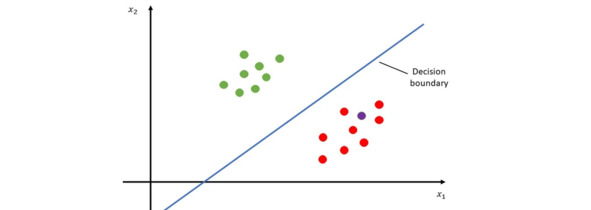
Полная версия
Artificial intelligence with a human face. How neural networks build emotional connections with customers
In the emotionally adaptive systems, this integration allows it to possess high empathic accuracy, providing not only emotion detection, but also understanding of its context, reasons, and direction of evolution. This allows the system to dynamically adjust behavior, tone, and type of interaction while interacting with the user.
To classify facial expressions and interpret feelings based on such associations, various machine learning algorithms are actively applied. Among them, support vector machines (SVM) hold a special place [23]. They demonstrate high efficiency when processing well-labeled and linearly separable data (fig. 12).

Figure 12. Model SVM for classifying emotional expressions
Their main advantage is the ability to create best separating hyperplanes that maximally discriminate data classes in a multidimensional feature space. It allows you to effectively differentiate between anger, joy, surprise, disgust, and other expressions, even when there are minimal differences in facial patterns among them. The algorithm works by finding a boundary that not only separates classes but also maximizes the distance between the nearest points of different classes, the support vectors. In doing this, it renders the model robust against overfitting, especially for cases where the number of features is small, and the training sample size is limited.
Конец ознакомительного фрагмента.
Текст предоставлен ООО «Литрес».
Прочитайте эту книгу целиком, купив полную легальную версию на Литрес.
Безопасно оплатить книгу можно банковской картой Visa, MasterCard, Maestro, со счета мобильного телефона, с платежного терминала, в салоне МТС или Связной, через PayPal, WebMoney, Яндекс.Деньги, QIWI Кошелек, бонусными картами или другим удобным Вам способом.



